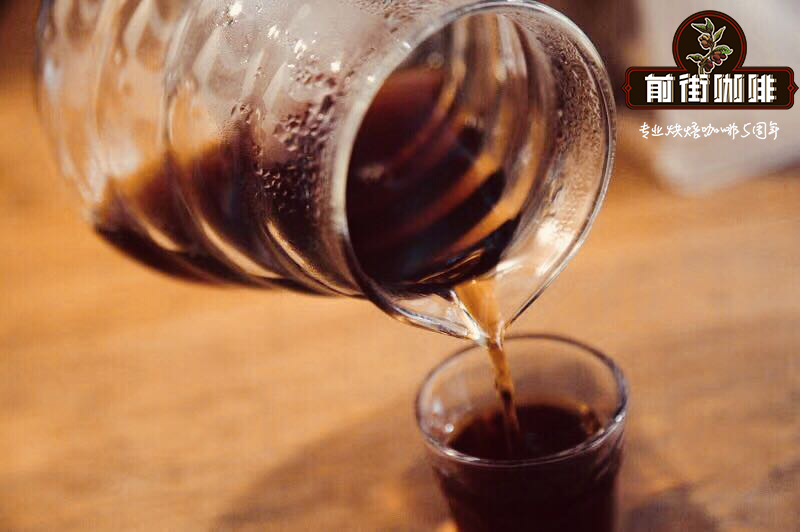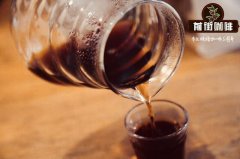The Asian coffee bean producing country Yunnan mainly produces coffee beans. Where there is tea, there is coffee.

Professional coffee knowledge exchange more coffee bean information please follow the coffee workshop (Wechat official account cafe_style)
Qianjie-introduction of coffee producing areas in Yunnan
After 1930, Mr. Liang Jinshan, a famous overseas Chinese leader, brought coffee to Pudong and Luoming for planting until the founding of the people's Republic of China. After 1952, under the guidance of experts in Baoshan, Lujiang and other places began to grow a large number of coffee, and the history of large-scale cultivation has been nearly 60 years.
In the mid-1990's, the planting scale reached 4000 hectares. By the end of 1997, the planting area of coffee in the province had reached 7800 hectares. At present, the planting area of the province accounts for 70% of the national area, and the output accounts for 83% of the whole country. Yunnan coffee has established the dominant position in China in terms of planting area and coffee bean production.
The western and southern parts of Yunnan Province are located between 15 °N and the Tropic of Cancer, and most areas are 1000-2000 meters above sea level. The topography is dominated by mountains and slopes, with large ups and downs, fertile soil, sufficient sunshine, rich rainfall and large temperature difference between day and night. These unique natural conditions form the particularity of Yunnan small grain coffee taste-strong but not bitter, fragrant but not strong, slightly fruity.
Coffee cultivation in Yunnan is mainly distributed in Lincang, Baoshan, Pu'er and Dehong, where there are natural resources of low latitude, high altitude and large temperature difference between day and night, which makes Yunnan a golden growing area for producing Arabica coffee with high quality.
Pu 'er Tea
Pu'er coffee has a history of one hundred years. It began to be cultivated at the end of the 19th century and developed into industrialization in 1988. Now the planting area of coffee in the city has reached 767000 mu, making it the main coffee producing area and coffee trade distribution center with the largest planting area, the highest yield and the best quality in the mainland.
Pu'er Rong is known as the "coffee capital of China". In addition to becoming the main producing area of Chinese coffee, Pu'er coffee is also exported to more than 30 countries and regions, including the Americas, Europe and Asia, creating a new "black gold" market.
Lincang
Lincang City is located in the southwest of Yunnan Province, with the Tropic of Cancer running through the south, Pu'er in the east, Dali in the north, Baoshan in the west, and Myanmar in the southwest. It is a bright pearl in the southwest of the motherland because it is close to the Lancang River. The annual average temperature in Lincang is between 16.8 ℃ and 17.2℃. The dry and wet season is obvious and the sunshine is sufficient.
Baoshan
Baoshan small-grain coffee in Yunnan has a long history of cultivation. Baoshan small-grain coffee can be said to be a national geographical indication product, and it is one of the coffee with good quality in the whole country and in the world.
The average temperature of Baoshan is 21.5℃, and the highest is 40.4℃, which is basically frost-free all the year round. It is recognized as the best producing area of small-grain coffee. The small-grain coffee cultivated here is famous at home and abroad for its strong but not bitter, fragrant but not strong, well-proportioned small noodles, mellow and fruity.
Knowledge: the west and south of Yunnan Province are located between 15 °N and the Tropic of Cancer, and most areas are 1000-2000 meters above sea level. The topography is dominated by mountains and slopes, with large undulation, fertile soil, sufficient sunshine, rich rainfall and large temperature difference between day and night.
In short: Qianjie is a coffee research hall, happy to share the knowledge about coffee with you, we share unreservedly just to make more friends fall in love with coffee, and there will be three low-discount coffee activities every month. The reason is that Qianjie wants to make more friends drink the best coffee at the lowest price, which has been Qianjie's tenet for 6 years!
END
Important Notice :
前街咖啡 FrontStreet Coffee has moved to new addredd:
FrontStreet Coffee Address: 315,Donghua East Road,GuangZhou
Tel:020 38364473
- Prev

One of the best and oldest varieties of coffee beans in Yunnan, a country rich in coffee beans in Asia.
Professional coffee knowledge exchange more coffee bean information please follow the coffee workshop (Wechat official account cafe_style) Qianjie-Yunnan Coffee introduces the origin of Asian coffee: 1, China 2, Indonesia 3, Vietnam 4, Peru China's earliest coffee cultivation began in Yunnan, was introduced by French missionaries in 1887, about a hundred years later by the government attention and committed to the cultivation of its production capacity, to
- Next

What is the proportion of cold extracted coffee? what is the proportion of cold extracted coffee? different flavors.
Professional coffee knowledge exchange more coffee bean information please follow the coffee workshop (Wechat official account cafe_style) front street-cold extraction coffee making introduction Cold brew cold extract (brew) coffee, to put it simply, is to soak the coffee powder in water in various forms, refrigerate and stand still, and then filter the extract. It and another kind of brother ice drop coffee (dutch coffee) can be said to be twins.
Related
- Beginners will see the "Coffee pull flower" guide!
- What is the difference between ice blog purified milk and ordinary milk coffee?
- Why is the Philippines the largest producer of crops in Liberia?
- For coffee extraction, should the fine powder be retained?
- How does extracted espresso fill pressed powder? How much strength does it take to press the powder?
- How to make jasmine cold extract coffee? Is the jasmine + latte good?
- Will this little toy really make the coffee taste better? How does Lily Drip affect coffee extraction?
- Will the action of slapping the filter cup also affect coffee extraction?
- What's the difference between powder-to-water ratio and powder-to-liquid ratio?
- What is the Ethiopian local species? What does it have to do with Heirloom native species?

